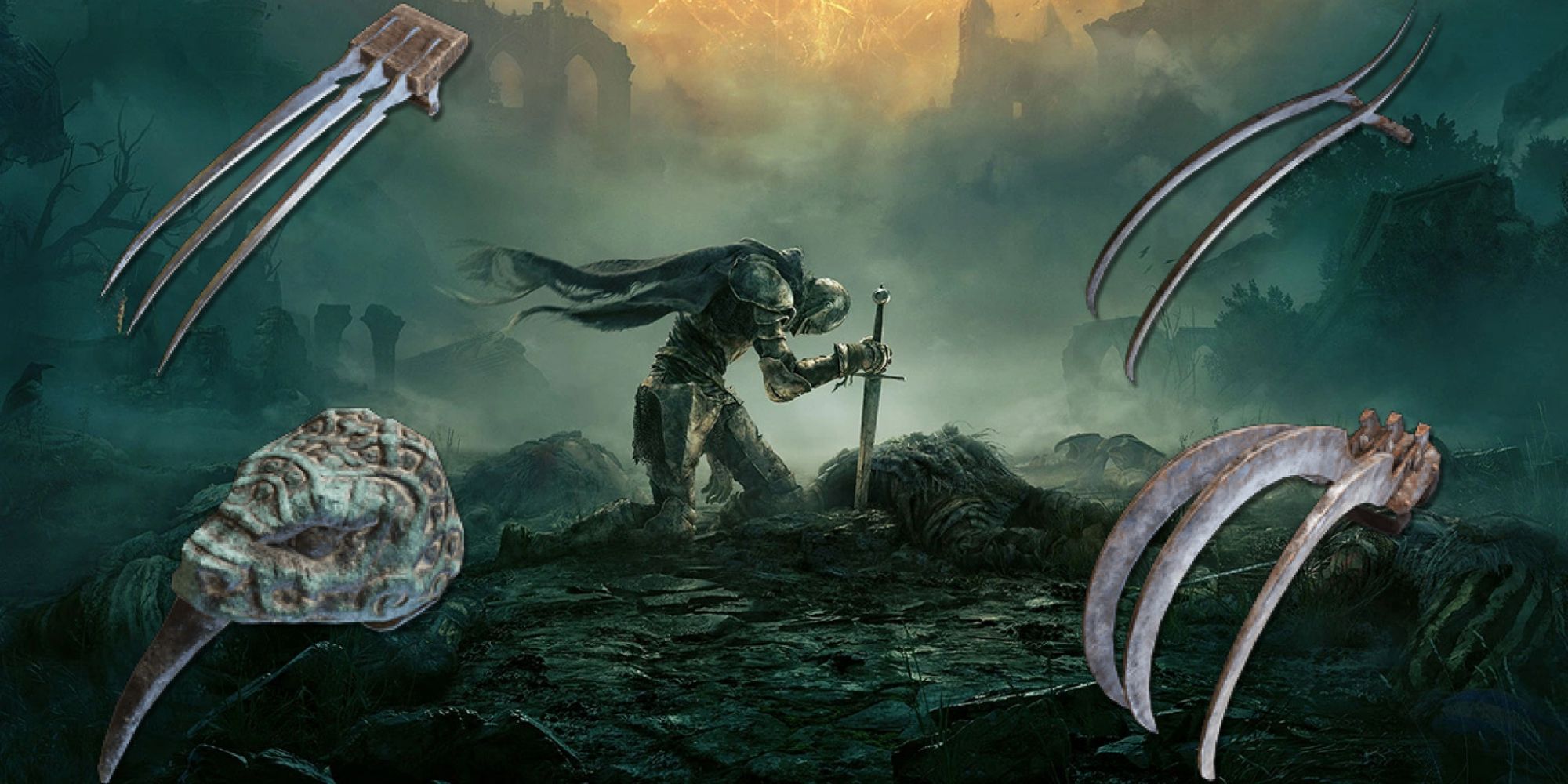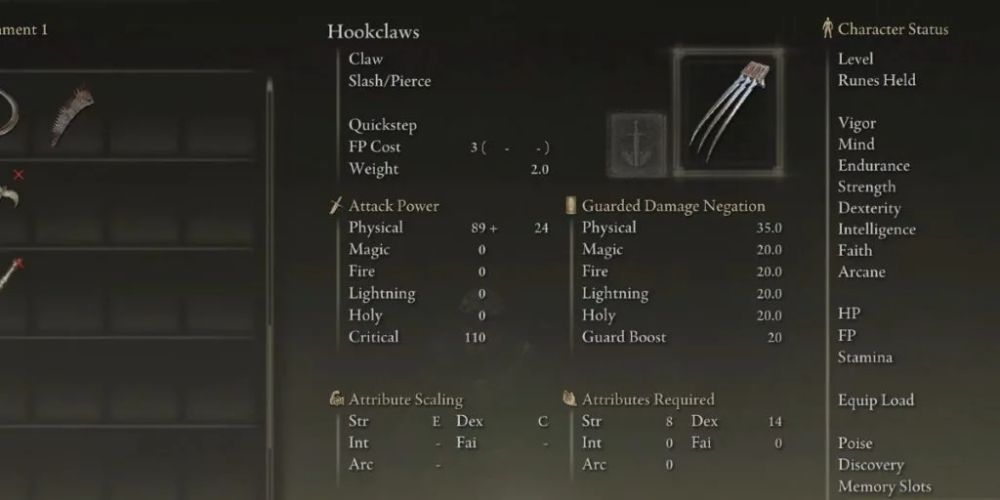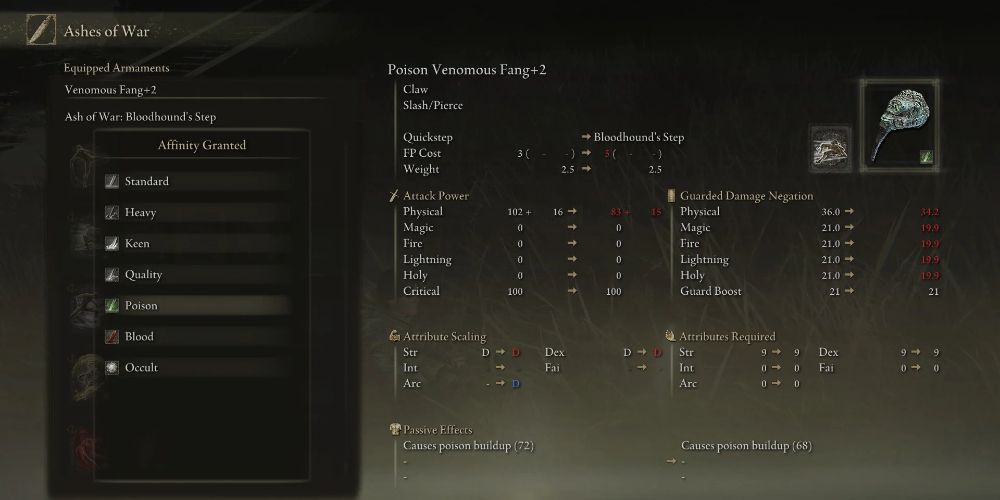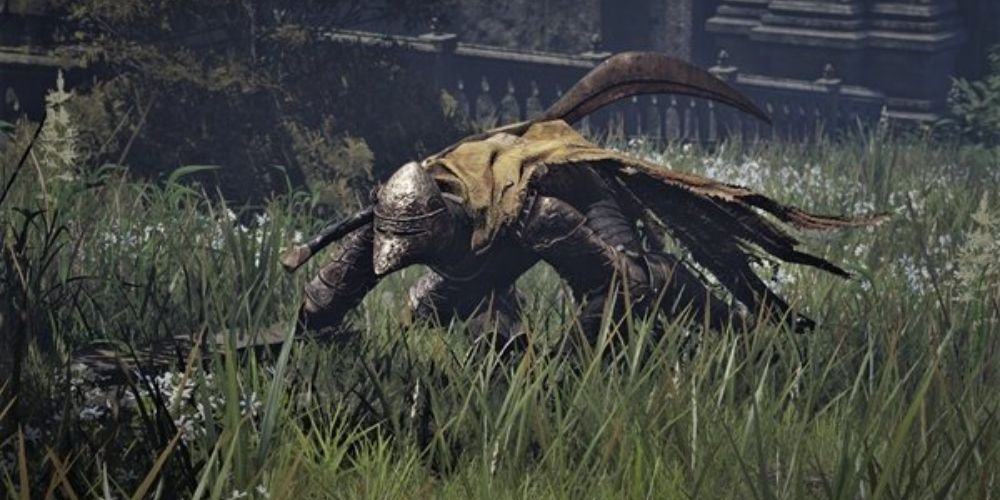The latest installment in FromSoftware’s dark fantasy RPGs, Elden Ring, provides players with a diverse set of weapons to use how they see fit. Based on any particular build, players will necessarily gravitate toward certain types of weapons. For Dexterity-oriented builds, “Claw” weapons are a solid choice for dealing quick bursts of DPS alongside heavy bleed damage. For players considering a Dexterity and bleed build, therefore, Claws are a mechanically sound (and aesthetically unique) choice.
In the whole game, there are only four Claw weapons. This ranking considers how difficult they are to find, how useful they are in PvE and PvP, and how adaptable they might be to different builds. Here are all the Claw weapons in Elden Ring, ranked according to their overall strengths.
4 Raptor Talons
The Raptor Talons are found in the Sage’s Cave on the Altus Plateau, and they are at the bottom of the list, primarily due to their niche damage buff. As the weapon description indicates, this weapon has increased damage during jumping attacks. Jumping attacks are effective in select circumstances—especially at the beginning of a fight—but they rarely make up a significant portion of the Tarnished’s attacks.
Like most Claws, the Weapon Skill is Quickstep—allowing the user to quickly dodge and reposition—and the Passive deals 60 bleed buildup. The Strength requirement is 6, and the Dexterity requirement is 14; as such, the Talons can be used by magic builds that have not allocated many points into Strength or Dexterity. The Raptor Talons can also be upgraded, increasing the damage output and catering the damage scaling to player preference.
3 Hookclaws
The Hookclaws is the standard for the Claw archetype in many ways — they are likely the first Claw weapons that players find, they are visually simple and are not mechanically nuanced. Unlike the Raptor Talons, the Hookclaws are not especially good in any particular situation; rather, they are broadly useful instead of useful in particular cases.
The Hookclaws are found in Stormveil Castle, along the route that the sneaky Gatekeeper Gostoc suggests. Once the Tarnished is inside the castle and on the first floor of a wine cellar, the Hookclaws are found on a corpse in the corner farthest from the entrance.
Like most Claws, the Weapon Skill is Quickstep—allowing the user to quickly dodge and reposition—and the Passive deals 60 bleed buildup. Given the general versatility of the Hookclaws at close range, consider buffing these weapons with Sorceries, Incantations, or items (i.e., Bloodflame Blade). The Strength requirement is 8, and the Dexterity requirement is 14. Like other Claws, the stat requirements are low but marginally favor Dexterity builds. The Hookclaws can also be upgraded, increasing the damage output and catering the damage scaling to player preference.
2 Venomous Fang
The Venomous Fang — fittingly found in Caelid behind a Giant Poison Flower in the Abandoned Cave — is the odd one out in terms of the Claw weapons. The other weapons can be used as a pair or as a single Claw, but this weapon is a singular “Fang;” as such, the Venomous Fang is slightly lacking in adaptability. Instead of dealing bleed buildup, this weapon’s Passive inflicts 72 poison buildup.
The Strength requirement is 9, and the Dexterity requirement is 9. The low requirements make this weapon highly accessible for magic builds. The Venomous Fang can also be upgraded, increasing the damage output and catering the damage scaling to player preference. Oddly enough, the poison upgrade stacks the pre-existing poison damage, inflicting a massive 95-poison build-up when fully upgraded. Players might also consider upgrading the Venomous Fang into another damage type, such as Frostbite or Bleed, for the sake of diversifying damage types.
1 Bloodhound Claws
The Bloodhound Claws share the designation of being both a “Bloodhound” weapon (i.e., the Bloodhound’s Fang) and a Claw weapon. Bloodhound weapons are associated with the Bloodhound knights, who employ an animalistic fighting style. Given this weapon’s speed and sheer damage, that style is in the hands of the Tarnished. Like the Hookclaws, the Bloodhound Claws are not confined to a niche — they are broadly useful in any close-range situation.
The Bloodhound Claws are found in the Volcano Manor. After entering the secret passageway, these Claws are dropped by a Lesser Bloodhound Knight.
The Bloodhound Claws have a Weapon Skill that is an elevated form of Quickstep: Bloodhound’s Step. This Skill is popular among players for PvE. Functioning similarly to Quickstep, Bloodhound’s Step pivots the player farther and faster than Quickstep. Since the Tarnished briefly becomes invisible, this is also a player favorite, given its stylistic quality. The Passive deals 60 bleed buildup, and all attacks also ignore 40% of blocked damage negation, making it particularly effective against shields. The Strength requirement is 10, and the Dexterity requirement is 15. These requirements are still relatively low, but they are the highest of all Claw weapons. The Bloodhound Claws can also be upgraded, increasing the damage output and catering the damage scaling to player preference.





